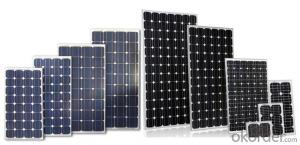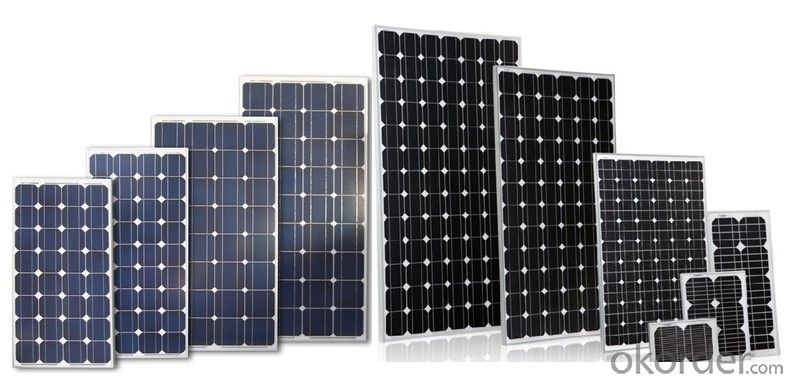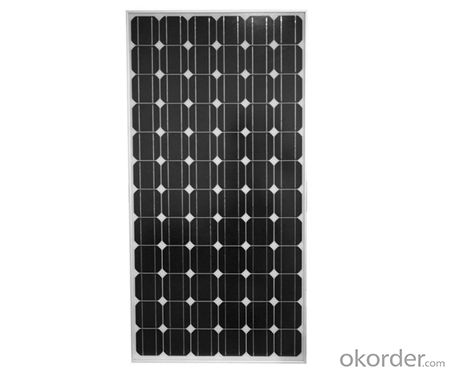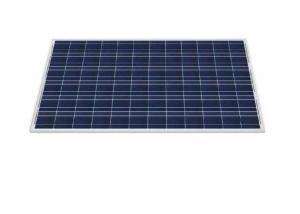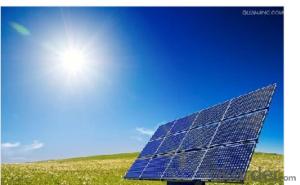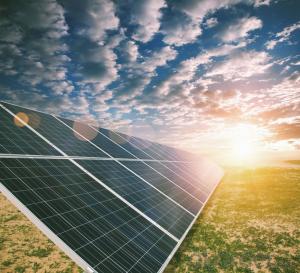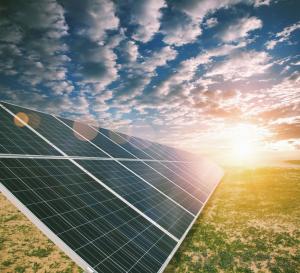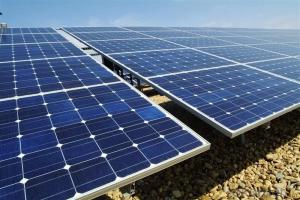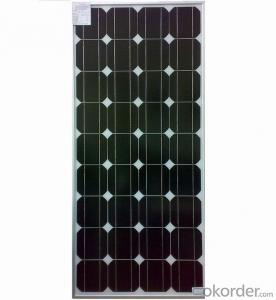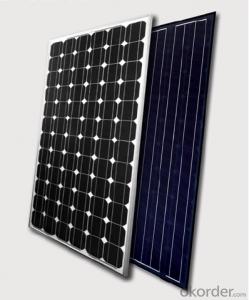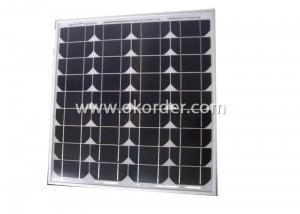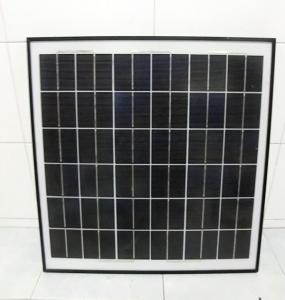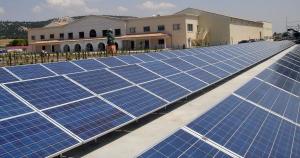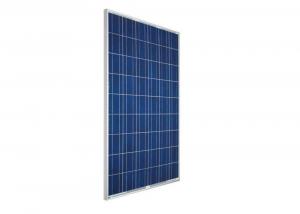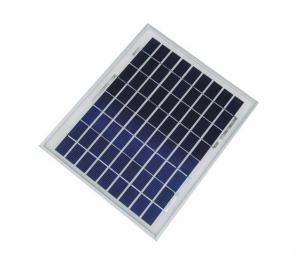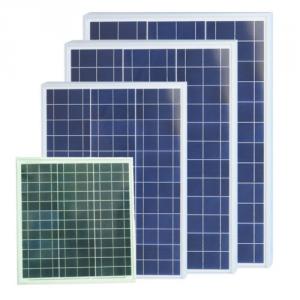280w CNBM Solar Monocrystalline Series (280w—290w) for Solar Panels North East
- Loading Port:
- China main port
- Payment Terms:
- TT OR LC
- Min Order Qty:
- 10000 watt
- Supply Capability:
- 500000 watt/month
OKorder Service Pledge
OKorder Financial Service
You Might Also Like
Specification
CNBM Solar Monocrystalline Series V (280W—290W)
Characteristics
| Max Power Voltage Vmp(V) | 34.7 | 35 | 35.5 | |
| Max Power Current Imp(A) | 8.51 | 8.58 | 8.65 | |
| Open Circuit Voltage Voc(V) | 41 | 41.3 | 41.7 | |
| Short Circuit Current Isc(A) | 9.25 | 9.3 | 9.35 | |
| Max Power Pm(W) | 295 | 300 | 305 | |
Temperature Coefficient of Cells
| NOCT | 45℃±2℃ | |||
| Temperature Coefficients of Isc (%/℃) | - 0.039 | |||
| Temperature Coefficients of Voc (%/℃) | –0.31 | |||
| Temperature Coefficients of Pmp (%/℃) | –0.42 | |||
Mechanical Data
| Dimension | 1954 x 982 x 45 mm | |||
| Weight | 27.5kg | |||
| No. of Cells and Connections | 72 (6 x 12) | |||
| Tolerance | –0.42 | |||
| Cell Monocrystalline Cell | 156 x 156 mm | |||
| Packing | 528 Pcs/40ft(H) Container | |||
Limits
| Operating Temperature | –40 °C to +85°C | |||
| Storage Temperature | –40 °C to +85°C | |||
| Max System Voltage | 1000VDC(IEC) / 600VDC(UL) | |||
IV Curve

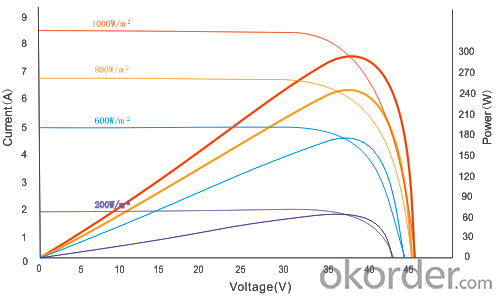
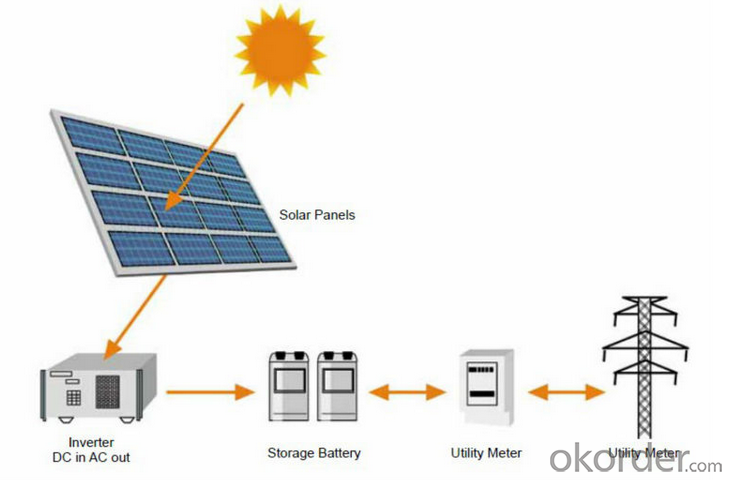
Image

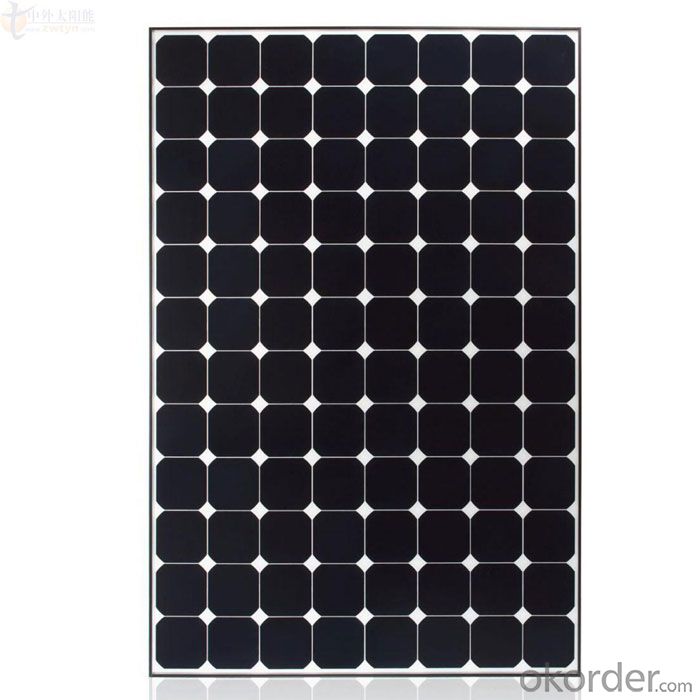
Guarantees
Products Guarantee 12 yrs free from defects in materials and workmanship
Performance Guarantee No less than 90% within 10yrs and no less than 80% within 25yrs
Certificates TUV (IEC61215&IEC61730), VDE(IEC61215&IEC61730), UL, CE
FAQ
1. Q: Do you have your own factory?
A: Yes, we have. Our factory located in Jiangsu province.
2. Q: How can I visit your factory?
A: Before you take off from your country, please let us know. We will show you the way, or arrange time to pick you up if possible.
3. Q: Do you provide free sample?
A: Usually we do not offer free sample
4. Q: Could you print our company LOGO on the nameplate and package?
A: Yes, we can do that.
- Q: What is the difference between monocrystalline and polycrystalline solar panels?
- Monocrystalline solar panels are made from a single crystal structure, typically silicon, which results in a uniform appearance and higher efficiency. Polycrystalline solar panels, on the other hand, are made from multiple silicon fragments, resulting in a less uniform appearance and slightly lower efficiency.
- Q: Solar panels are costly.Do you know any inexpensive way?So that i can make one of my own.
- you could use a water container with the sun focased on it and make it so that the water that gets heated goes out of a tube near the middle and the tube would lead to a turbine that generates electricity when water is forced through the tube( like an IV machine pump they use in hospitols only reversed so that it generates power instead of using power) then lead the tube back to the very top to release the water. PS basic principle behind idea is that water moves when heated and slows when cooled HARNESS THAT ENERGY
- Q: I live in Sacramento, CA, and I need some solar panels for a project fo school. They don't have to be very big......just something that I can use as an example.Thanks!
- Trees, they have plenty of leaves. You'll probably have to buy an educational kit from Radio Shack or something like that. Maybe break some old solar powered calculators open.
- Q: Can solar panels be used in areas prone to hurricanes or earthquakes?
- Yes, solar panels can be used in areas prone to hurricanes or earthquakes. However, they need to be properly installed and reinforced to withstand the potential impact. Additionally, in areas prone to hurricanes, it is recommended to have a plan in place to secure or remove the panels before the storm hits to prevent potential damage.
- Q: If my school uses 88240kWh of electricity per month and I have 000 50W solar panels running for 6 hours a day, does it mean it will take 88240kWh / {{[(50W x 3600s)*000]/000}kWh x 6} number of hours to generate that much electricity (88240kWh)?
- running six hours a day doesn't mean much. You need to look at the solar insulation charts for your school's geographical location to come up with a better factor. The easiest number for you to use is sun hours. For example, Washington DC averages 4.23 hours. Do a Yahoo search for sun hours and you should find lots of charts. Solar panels rated at 50W give this output at full sun near noon at full brightness (no clouds). The sun hour factor makes it easy to find the equivalent number of full brightness hours. So, using Washington DC as an example you have: 000 panels * 50W * 4.23 sunhours/day = 634kWh a day on average. You state your school uses 88240kWh/month which is 6274kWh a day. This would mean you need ten times more solar panels since there is no way to get more daylight. Be careful to put in all the units in your formula and cancel them out to make sure you don't end up with a nonsense result. The title of the question would be answered as followed: 50W/000 * 4.23 sunhours/day = 0.63kWh/day or 9kWh per month or 228kWh a year. These are annual averages. If you wanted a specific month, you would need the sun hours for that month. Hope this helps.
- Q: my solar panel is 5v 50 mA, and im making iphone USB charger so i need to connect + with 00 ohm resister and to data - and + so what resister will be okay..?
- Just connect the 5 volts out of the panel directly to the iphone via an USB connector. BUT, is the panel output always 5 volts, ±0.25 volts? Because that is the USB specification, and anything outside of those values could damage your iphone. And solar panels are known for their wide swings in voltage. Bottom line, resistor not needed, and you need to be positive you supply the correct voltage to the iphone. Best way to do that is to start with a solar panel that puts out at least 7 volts and use a LM7805 regulator. The only resistors needed are those to tie the data lines into a certain combination of resistance and voltage so that the iphone is fooled into thinking that a proper USB is connected. That would NOT involve a 00 ohm resistor. Search online for the proper values and connections. edit: are you repeating your same inane question with a different account? That is totally against the rules and could get you suspended.
- Q: How do solar panels convert sunlight into electricity?
- Solar panels convert sunlight into electricity through a process called the photovoltaic effect. When sunlight hits the solar panels, the photons in the sunlight excite the electrons in the solar cells, allowing them to flow and create an electric current. This current is then captured and converted into usable electricity, which can power various devices and homes.
- Q: Can solar panels be used to power a museum?
- Yes, solar panels can be used to power a museum. Solar panels convert sunlight into electricity, which can then be used to power various electrical systems and devices within the museum. The installation of solar panels on the museum's roof or surrounding areas can generate renewable energy, reducing the reliance on traditional energy sources and lowering carbon emissions. Additionally, solar power systems can provide a sustainable and cost-effective solution for powering a museum's lighting, climate control systems, and other electrical needs.
- Q: Ok so i'm writing this research paper on why solar panels are the best way to quot;go greenquot;. I need at least 5-7 reasons why they are good. and a common counterargument that i could defend. I've already come up with incentives and efficiency but i need a few more Please help its very important and worth half my grade
- Actually, solar energy IS a good one. It's something we all need to think about, especially when coal and oil become harder to get. Good luck with your paper!
- Q: Can solar panels be installed on a hospital or medical facility?
- Yes, solar panels can be installed on a hospital or medical facility. In fact, many hospitals and medical facilities have already adopted solar energy to reduce their carbon footprint and lower energy costs. Solar panels can be installed on rooftops or on the ground surrounding the facility, providing clean and sustainable energy to power the facility's operations.
Send your message to us
280w CNBM Solar Monocrystalline Series (280w—290w) for Solar Panels North East
- Loading Port:
- China main port
- Payment Terms:
- TT OR LC
- Min Order Qty:
- 10000 watt
- Supply Capability:
- 500000 watt/month
OKorder Service Pledge
OKorder Financial Service
Similar products
Hot products
Hot Searches
